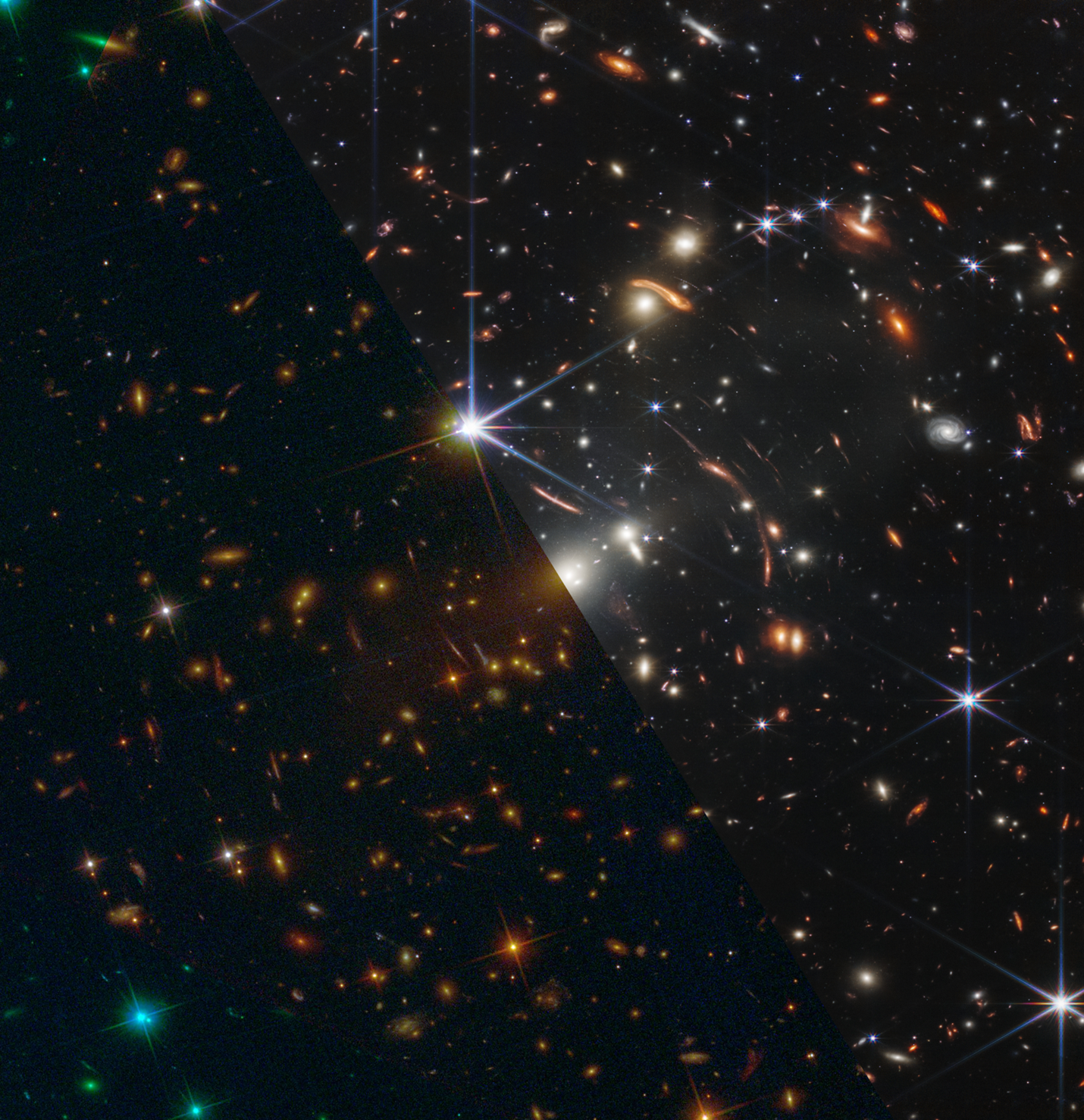Faraway galaxies are hard to detect, not only because they appear fainter, but also because the light that we detect from them is infrared. Many of these objects were invisible to us until the James Webb Space Telescope was launched. With this new telescope, scientists discovered 33 new galaxies in the early universe. This opens the door for James Webb to find many new galaxies.
Views 2513
Reading time 4 min
published on May 29, 2023
Most of the stars in the universe are born, live, and die within a galaxy – a system containing millions (or billions) of stars. Galaxies are extremely numerous in the universe. No matter where we look in the night sky, or in which direction we search, we always find them.
Galaxies have been around in the universe for about 13 billion years, as they started forming only a few million years after the Big Bang. However, they looked very different back then –smaller, with different shapes - and they would form stars at a different rate than they do today.
All the knowledge we have regarding early galaxies comes from both scientific simulations of galaxy formation, and observations of the distant universe. Looking at distant objects is like looking at the past. The further away an object, the deeper into the past we are observing. If we look far enough away, we can find galaxies that lie 13.3 billion years in the past–just 400 million years after the Big Bang!
When we observe the early universe, we usually find low-mass galaxies where a very large number of stars are constantly forming. We rarely find massive galaxies with low star formation, but it was not clear if this is the reality of the early universe, or if we were just incapable of detecting other types of galaxies. There was a suspicion that some galaxies might be too “red” to be seen.
Because the universe is expanding, everything in it is stretched, including light. As the light’s wavelength gets stretched, we see it as “shifted” towards redder colors. This phenomenon is called redshift. The further an object is, the redder it looks, because its light had more time to travel toward us. If an object is very distant from us, it can get so redshifted that its light becomes infrared – invisible to us.
Very distant galaxies emit visible light, but by the time this light reaches us, it has become very faint and infrared. Most telescopes only detect visible light, and the ones that can observe infrared would still fail to detect such faint galaxies. Even the famous Hubble Space Telescope (HST), with its unprecedented sensitivity, cannot find most of these objects. Only the very bright galaxies in the distant universe were detectable to us.
Most distant galaxies detected by HST are actively producing many new stars – a hundred times more than our own galaxy. This makes them especially bright. Moreover, these galaxies barely contain any dust that would obscure their light. There was no sign of faint galaxies with low star formation or high amounts of dust. This led us to think that the early universe is only populated with low-mass, dust-free, star-forming galaxies. However, we had the suspicion that other types of galaxies might exist in the early universe, but they were just invisible for HST.
Everything changed when the new James Webb Space Telescope (JWST) was launched in December 2021. JWST can detect very faint objects in the infrared. It was the perfect instrument to solve the mystery: are there other types of galaxies in the early universe? Answering this question was critical because it could completely change our understanding of how galaxies grew and evolved at earlier times.
The team led by Laia Barrufet found 33 galaxies invisible to HST (so-called HST-dark) but visible to JWST. Their properties contrast with those from the low-mass and dust-free galaxies that were found before in the distant universe.
This result proves that many galaxies have been missing from our “cosmic census”, i.e. the count of the galaxy population that we know in the early universe. In reality, there is an ecosystem of massive and dusty galaxies that we could not detect before, but they can now be found thanks to the JWST mission.
These 33 galaxies were found as an early result, using very little data from this new mission. This discovery only opens new questions, as now we need to know if other such galaxies exist, and what they look like. In the next few years, observations with JWST will most likely find many more galaxies with different peculiarities, and we will be closer to completing the cosmic census of the early universe.
Original Article:
Barrufet, L., Oesch, P. A., Weibel, A., Brammer, G., Bezanson, R., Bouwens, R., Fudamoto, Y., Gonzalez, V., Gottumukkala, R., Illingworth, G., Heintz, K. E., Holden, B., Labbe, I., Magee, D., Naidu, R. P., Nelson, E., Stefanon, M., Smit, R., van Dokkum, P., … Williams, C. C. (2023). Unveiling the nature of infrared bright, optically dark galaxies with early JWST data. Monthly Notices of the Royal Astronomical Society, 522(1), 449–456. https://doi.org/10.1093/mnras/stad947
 Earth & Space
Earth & Space



